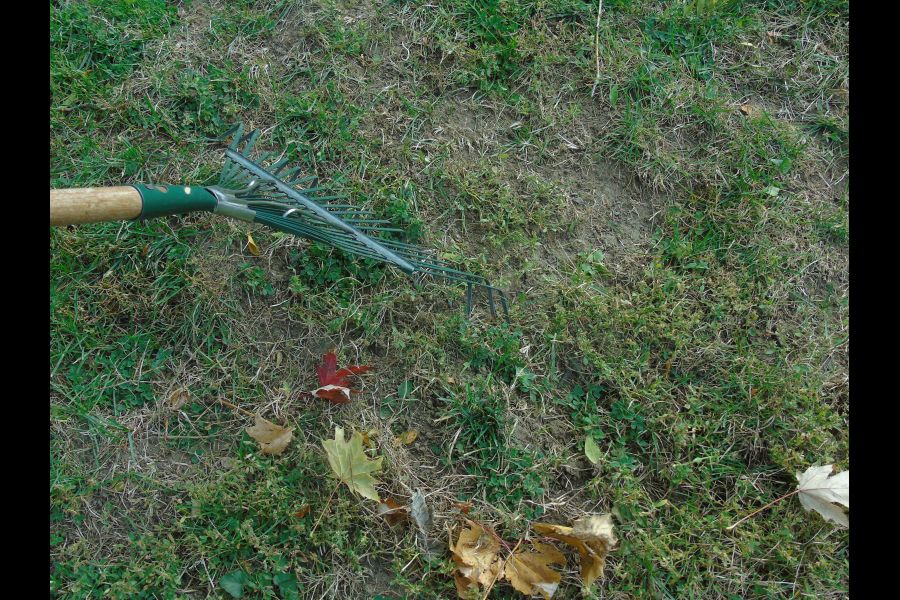Spring is officially here. It had to happen at some point. The temperatures are warming up, the snow is melting and the birds are singing.
One of the first tasks that we tackle in the garden each spring is getting our lawns off to a good start.
Raking: The first step in spring care is raking over the lawn with a fan rake. This is to help clean up any debris left on the lawn over winter and reduces the chance of disease on your lawn, such as snow mould. It also loosens up the soil surface before putting down grass seed.
Fertilizing: If crabgrass was a problem in your lawn last year, then you will want to get it under control this spring. Early to mid-April (when the forsythia is just coming into bloom) is the right time to apply a crabgrass preventer such as corn gluten. Corn gluten meal is a powdery byproduct of the corn milling process. This natural protein is very effective as a plant food as well as a weed suppressor.
As a plant food, corn gluten has a N-P-K ratio of 9-1-0. As a weed suppressant, it acts as a natural "pre-emergent," meaning it inhibits seed germination by drying out a seed as soon as it cracks open to sprout. If you can keep the crabgrass seeds from germinating for those first couple weeks of spring, they will most likely stay dormant for the entire season.
If crabgrass wasn’t a problem last year, then you should be fertilizing the lawn with a higher nitrogen fertilizer (high first number). Try to use organic fertilizer wherever possible. Most fertilizers are effective for five to six weeks.
Dethatching: Thatch is the layer of slowly decomposing grass stems, dead roots and debris that accumulates above the soil and below the grass blades. Having some thatch (less than one-quarter inch) is beneficial. It helps to absorb moisture and keep it at the root level, and it shades the roots so that the soil does not dry out as quickly.
Thatch becomes a problem when it is thicker than one-quarter inch and is more of a problem when you have acidic soil or where a lot of high-nitrogen fertilizers have been used. The micro-organisms that help to break down the thatch layer do not like soils high in nitrogen or acidic conditions.
Dethatching should be done just before vigorous growth in spring or fall, but it does not need to be done every year, just when it is more the one-quarter inch thick. To check to see if you need to dethatch, dig up a small area of sod and check the thickness of the spongy layer below the grass blades, and above the roots.
Dethatching is done with a sharp, diamond-toothed thatching rake. Simply pull the rake through the grass and it will pull out a lot of the brown, decomposing debris.
Aerating And Rolling: Aerating your lawn is a procedure where cores of soil are removed to allow more air into a compacted soil. This does not need to be done every year unless you have very heavy, hard soil. Aerating is best done early spring or in the fall, especially if we have had a very dry summer. There are aerating tools for the homeowner, but you may want to consider hiring someone to do this for you.
Another job to be done is rolling your lawn. This will help smooth out rough areas. This also does not need to be done every year – it will compact your soil even more and just fills in the wormholes that were helping you aerate the soil naturally.
Rolling your lawn should be done when soil is slightly moist. If it is too dry it won’t be as effective.
Reseeding Or Top Dressing: Before you begin to reseed your lawn, rake up any dead debris that remains from the winter. Then put a thin layer of fresh topsoil or compost over area that you will be re-seeding. Next, generously scatter the seed over the desired area. You can lightly cover or rake over the scattered seeds in to hide them from the birds. Keep the seeded area evenly moist for the next week or two. The seeds should germinate in 10 to 14 days. The thicker the lawn is, the fewer weeds you will have.
Just remember, “If the grass is always greener on the other side, then others must feel that way about your side.”
Joanne Young is a Niagara-on-the-Lake garden expert and coach. See her website at joanneyoung.ca











